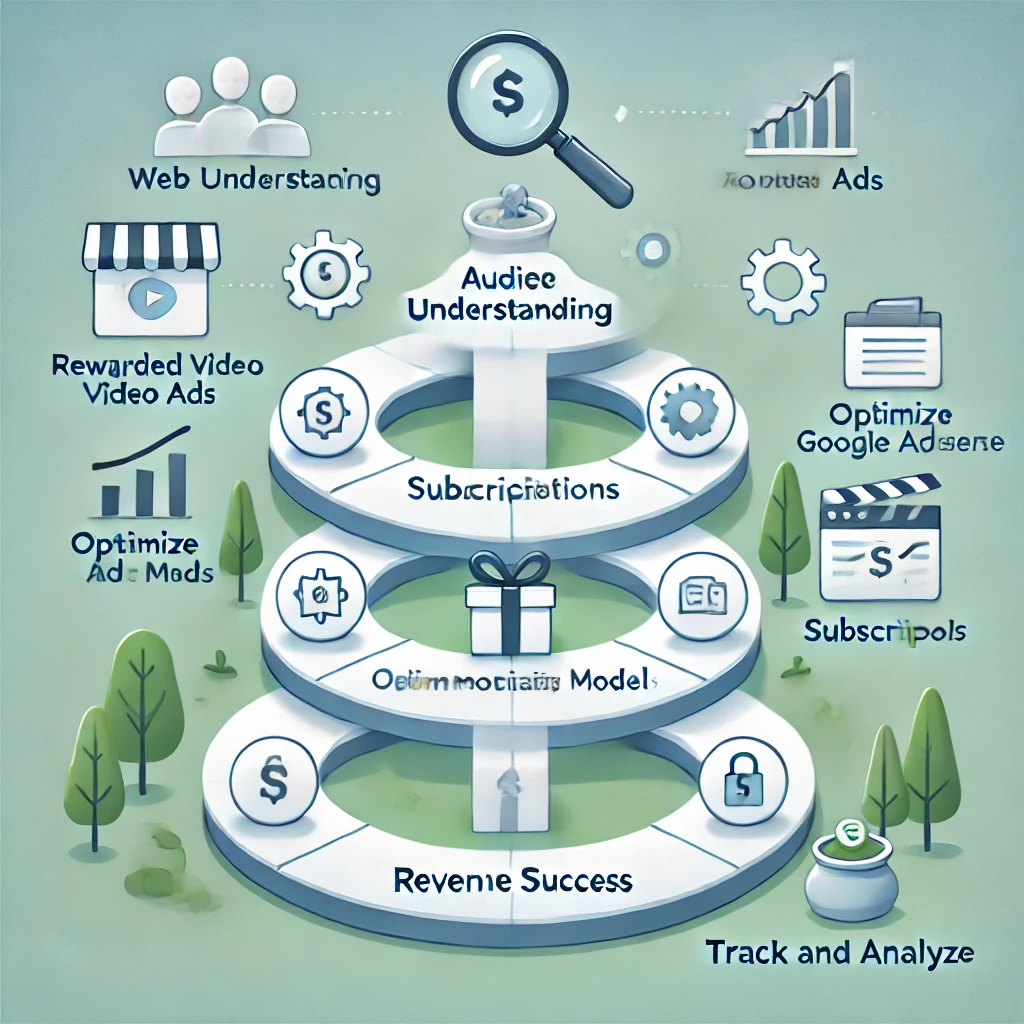In game monetization, relying on a small percentage of paying users is no longer sustainable for many developers. Traditionally, only about 2% of players make in-app purchases, so a decline in paying users can dramatically impact revenue. To counter this, game developers are exploring ways to monetize the broader, non-paying audience. One emerging strategy is video ad monetization, which has become increasingly popular as advertisers allocate substantial budgets to video advertising.
When implemented correctly, video ads can create a profitable monetization stream, allowing developers to generate revenue from all users, not just the ones making purchases. However, video ads require a strategic approach to maintain user engagement and avoid disrupting gameplay. Here are essential tips and best practices for integrating video ads in a way that enhances, rather than detracts from, the gaming experience.
Why Video Ads Are a Smart Alternative for Game Monetization
Game developers are turning to video ads as advertisers continue to increase spending on digital video. As mobile video ad revenue rises, developers who embrace video ads can capitalize on this lucrative opportunity. Unlike forced in-app purchases or aggressive monetization tactics, video ads can feel natural, especially if they’re incentivized. For example, rewarded video ads allow players to watch an ad in exchange for in-game benefits, making them feel like an optional and fair trade rather than an imposition.
Tips for a Successful Video Ad Strategy in Games
While video ads offer considerable potential, poor implementation can harm user experience and reduce player retention. Here are some considerations to ensure your video ad monetization strategy is effective and user-friendly.
1. Allow Users to Control the Video Viewing Experience
Giving users control over ad viewing is critical. Many developers make the mistake of forcing players to watch a 15-second ad before returning to the game. Although this might seem effective for impressions, it can quickly lead to frustration. Data shows that when players have the option to close or skip an ad, they’re more likely to stay and watch the entire video. By providing an easy-to-access close button, developers allow players to feel in control, which reduces frustration and enhances engagement.
Another approach is to use rewarded video ads. These ads give players the option to watch a video to earn an in-game reward, such as extra lives or currency. Because players voluntarily choose to view these ads, they feel more positively about the experience, which improves both user retention and ad revenue.
2. Avoid Displaying Ads During Game Load Times
Some games display video ads during the initial game loading screen. However, studies show that players prefer not to encounter ads when they first open a game. Ads placed at load time interrupt the gameplay before it begins, creating a negative experience that may lead to early abandonment.
A more effective placement for video ads is between game levels or sessions, or at natural pauses in gameplay. Ads displayed during these moments are less disruptive, as players are already taking a short break in their gameplay flow. Games that place ads between sessions experience an 80% longer player retention rate compared to games that display ads during load times. Rewarded video ads, which incentivize viewing, can extend game longevity by as much as 400% over pre-load ads. Integrating ads between levels not only increases engagement but also allows players to feel like they’re making a choice rather than being forced into a passive viewing experience.
3. Customize the Ad Viewing Experience to Match Your Game’s Theme
Ad placements that feel consistent with a game’s design are far more effective than those that seem out of place. For example, adjusting the media player’s color, font, or style to match the game’s aesthetic creates a seamless experience. This alignment of ad design with the game’s theme improves immersion and reduces the likelihood of players feeling disconnected from the experience.
For example, if your game has a futuristic or sci-fi theme, customizing the ad player to match that aesthetic can keep players engaged even during the ad. Advertisers also appreciate this level of detail, as it reflects a more professional presentation of their content. By maintaining visual consistency, you ensure a cohesive player experience and show advertisers that their ads will be presented in a way that resonates with users.
The Role of Rewarded Video Ads in Monetization
Rewarded video ads have emerged as one of the most popular ad formats in gaming. By offering rewards in exchange for watching an ad, rewarded ads provide a non-intrusive monetization strategy that appeals to players. Research shows that rewarded ads enhance player engagement and retention while allowing developers to benefit from higher click-through rates and completion rates.
For game monetization, rewarded ads provide several advantages:
- Increased User Engagement: Players willingly watch ads to earn in-game rewards, leading to a positive, engagement-driven experience.
- Higher Completion Rates: Users complete rewarded video ads at higher rates than unskippable or forced ads, which translates to better revenue opportunities.
- Enhanced Player Retention: Since rewarded ads create a positive interaction, players are more likely to return to the game, boosting retention.
For developers exploring rewarded video ads, it’s essential to keep rewards valuable but balanced. If the reward is too small, players may not be motivated to watch; if too large, it may impact gameplay balance.
Potential Pitfalls in Video Ad Monetization
While video ads are an effective monetization tool, they need to be handled with care. If poorly integrated, they can disrupt gameplay, create frustration, and even drive users away. Here are a few common pitfalls to avoid:
- Overloading the Game with Ads: Bombarding players with ads every few minutes diminishes the gameplay experience. Aim for a balanced approach, offering ads at natural breaks or between levels, rather than interrupting gameplay.
- Neglecting Ad Quality: Low-quality or irrelevant ads can quickly lead to user dissatisfaction. Work with ad networks that provide high-quality, relevant content that aligns with your audience’s interests.
- Ignoring Player Feedback: Players provide valuable feedback on ad experiences. Keep an eye on reviews and feedback channels to ensure ads aren’t negatively impacting user sentiment. Adjust the ad strategy as needed to enhance the player experience.
Key Metrics to Monitor for Video Ad Success
To gauge the success of video ad monetization, tracking performance metrics is essential. Here are some key metrics to consider:
- Completion Rate: Measures the percentage of players who watch the ad to the end. High completion rates indicate that players are engaged and receptive to video ads.
- Click-Through Rate (CTR): Tracks the percentage of players who click on the ad after watching it. A high CTR reflects good ad relevance and effectiveness.
- Effective Cost Per Thousand Impressions (eCPM): Measures ad revenue per thousand impressions, providing insight into ad profitability.
- Average Revenue Per Daily Active User (ARPDAU): Helps developers assess revenue generation per user, providing a clear view of ad impact on game monetization.
Final Thoughts on Video Ad Monetization
Video ad monetization offers game developers a powerful alternative to reliance on in-app purchases. By carefully implementing video ads and focusing on user-friendly practices, developers can create a sustainable revenue stream while maintaining player satisfaction. AppLixir provides developers with tools to serve gamer-friendly video ads, offering flexibility, control, and customization to suit different game styles and themes. As advertisers continue to invest in digital video, the potential for growth in video ad revenue remains substantial.
In the end, video ad monetization can significantly boost a game’s revenue potential without relying solely on a paying user base. With a thoughtful approach, video ads can enhance the gaming experience, allowing developers to monetize effectively without compromising user engagement or satisfaction.



